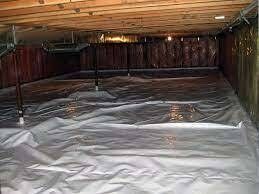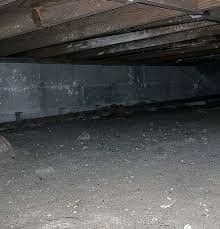
Introduction
A storm surge is a coastal flooding event that occurs when powerful onshore winds push ocean waters onto land. These storms can cause significant damage to coastal properties and infrastructure, leading to extensive cleanup and restoration efforts. In this comprehensive guide, we will explore various aspects of cleaning up after a storm surge, providing you with essential information to successfully restore your property.
Understanding Storm Surges
What is a Storm Surge?
A storm surge is an abnormal rise in water level along a coastline, typically caused by severe weather events such as hurricanes, tropical storms, or intense low-pressure systems. It occurs when the winds from these weather systems push large volumes of ocean water onto the shore, resulting in coastal flooding.
The Impact of Storm Surges on Properties
Storm surges can cause significant damage to coastal properties, including residential homes, businesses, and infrastructure. The forceful impact of the water, combined with the potential for debris and strong winds, can result in structural damage, flooding, and water infiltration.
Common types of storm surge damage include:
- Structural damage to buildings
- Water intrusion and flooding
- Erosion of coastal areas
- Debris accumulation
- Contamination from seawater and pollutants
It is important to take immediate action after a storm surge to mitigate further damage and begin the cleanup and restoration process.

Steps for Cleaning Up After a Storm Surge
1. Ensure Safety
Before starting the cleanup process, prioritize safety. Wear protective gear such as gloves, boots, and goggles to protect yourself from potential hazards. If the water damage is severe or the structure of the building is compromised, it is advisable to seek professional assistance.
2. Assess the Damage
Thoroughly assess the damage caused by the storm surge. Take photographs or videos of the affected areas for insurance documentation purposes. Make a list of damaged items and prioritize the restoration process based on the extent of the damage.
3. Remove Debris
Begin the cleanup process by removing debris and fallen objects from your property. This includes branches, leaves, furniture, and any other items that may have been displaced or damaged during the storm surge. Use appropriate equipment, such as rakes, shovels, and wheelbarrows, to facilitate the debris removal process.
For large-scale debris removal, consider hiring professional cleanup services that can safely handle and dispose of the materials.
4. Extract Water
If your property is flooded, it is crucial to extract the water as soon as possible to prevent further damage and the growth of mold and bacteria. Use pumps, wet/dry vacuums, or professional water extraction equipment to remove the standing water.
Ensure proper ventilation during the water extraction process to aid in drying out the affected areas.
5. Dry and Dehumidify
After the water extraction, focus on drying out the affected areas to prevent mold growth and further structural damage. Use dehumidifiers, fans, and open windows to increase air circulation and aid in the drying process.
Monitor the humidity levels in the affected areas and ensure they are brought down to acceptable levels (below 60%) to prevent mold growth.

6. Disinfect and Clean
Once the affected areas are dry, it is essential to disinfect and clean surfaces to remove any potential contaminants. Use appropriate cleaning solutions and follow the instructions carefully. Pay special attention to areas that came into contact with floodwater.
Dispose of any contaminated materials or items that cannot be adequately cleaned and disinfected.
7. Repair and Restore
After the cleanup process is complete, assess the structural damages and make the necessary repairs. This may involve repairing walls, roofs, windows, and other elements that were damaged during the storm surge.
Consider consulting with professionals for structural assessments and repairs to ensure the safety and integrity of your property.
8. Prevent Future Damage
Take proactive measures to prevent future storm surge damage. This may include reinforcing windows and doors, elevating utilities and electrical systems, and implementing proper drainage systems.
Consider consulting with a professional contractor or storm surge mitigation specialist to identify specific measures to protect your property.
Contact JGW Group Water Damage Restoration
If you require professional assistance with storm surge cleanup and restoration, contact JGW Group Water Damage Restoration. With their expertise and experience in handling water damage restoration, they can efficiently restore your property to its pre-damage condition.
JGW Group Water Damage Restoration
Additional Resources
For more information on storm damage restoration and related topics, visit the following resources:
- About JGW Group Water Damage Restoration
- Emergency Water Damage Restoration Services
- JGW Group Water Damage Restoration Blog
Frequently Asked Questions (FAQ)
What are the common types of damage caused by storm surges?
Is it safe to clean up after a storm surge on my own?
Disclaimer: This article contains affiliate links. If you make a purchase through these links, we may earn a commission at no additional cost to you.



